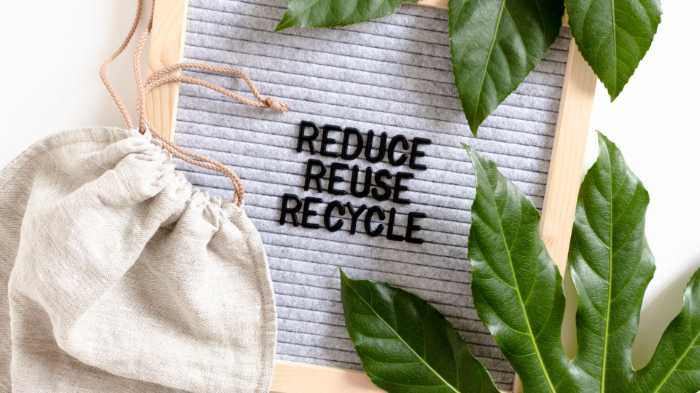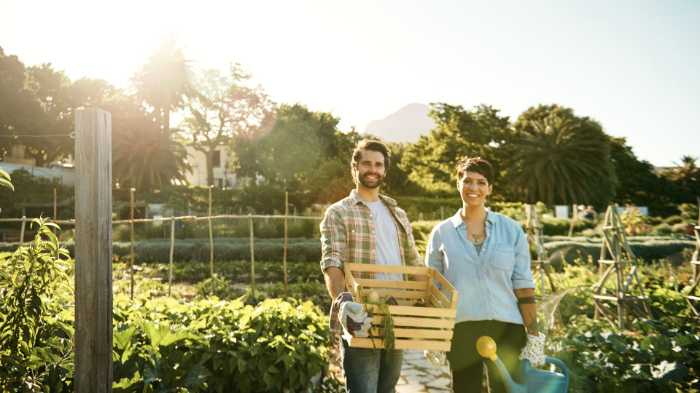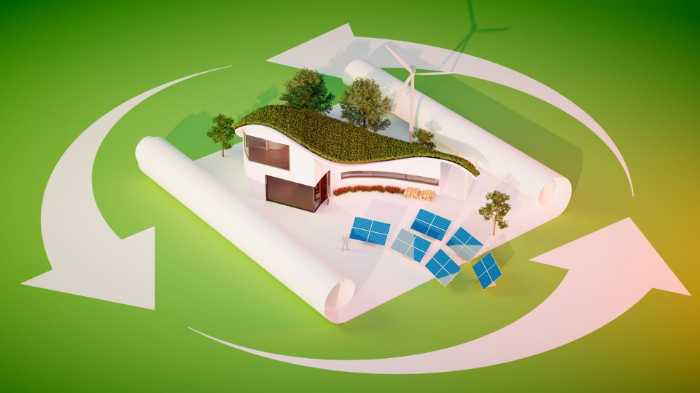
Ready to make a difference for the environment? Making small changes in your everyday life can have a big impact on preserving our planet for future generations. It’s not always easy, but it’s worth it! There are many different ways to adopt a more sustainable lifestyle, so finding the ones that work best for you is important. Every little bit helps!
- What are the 3 main principles of sustainability?
- 1. Economy
- 2. Society
- 3. Environment
- What is a sustainable person?
- How do you develop a sustainable habit?
- What makes a lifestyle sustainable?
- What are the 3 rules of sustainability?
- 1. Reduce
- 2. Reuse
- 3. Recycle
- What are some examples of sustainable living?
- 1. Choose environmentally friendly products
- 2. Support local and organic agriculture
- 3. Reduce energy consumption
- 4. Save water
- 5. Recycle and compost
- 6. Limit your consumption of meat and animal products
- 7. Avoid single-use plastics
- 8. Take public transportation
- 9. Offset your carbon emissions
- 10. Educate yourself and others
- Why is it important to live a sustainable lifestyle?
- 1. Protects the environment
- 2. Quality of life
- 3. The economic health of our planet
- What items are sustainable?
- Is America sustainable?
- Where does the US rank in sustainability?
- What is sustainability in the US today?
- Is American society sustainable?
- What are ecological habits?
- Conclusion
- Sustainable Habits FAQ
What are the 3 main principles of sustainability?

The three main principles of sustainability are:
1. Economy
It is about creating a circular economy where materials and energy are kept in use for as long as possible and waste is minimized. This will require innovative design, production, distribution, and consumption patterns.
2. Society
It is about creating a society that is just and equitable for all. We also need to build strong and resilient communities so that everyone can contribute to and benefit from sustainable development.
3. Environment
It is about protecting the ecosystems that sustain life. We must protect the natural environment and conserve its resources so that future generations can enjoy the same benefits we do. This includes taking action to mitigate and adapt to climate change.
Go Carbon Neutral – in only 3 Minutes!
What is a sustainable person?

A sustainable person is someone who takes into account the environmental and social impacts of their decisions. They make choices that minimize negative consequences and maximize positive outcomes for all living things.
Sustainable people are conservationists at heart, always looking for ways to reduce their ecological footprint. They believe that we all have a responsibility to take care of our planet and that it is our shared home.
If more people adopt a sustainable lifestyle, we could make a real difference in the health of our planet.
How do you develop a sustainable habit?
The key to developing a sustainable habit is to make it part of your daily routine. That means:
- Setting aside time each day to do the things you need to do to maintain your habit.
- Being consistent in your approach and monitoring your progress.
- Having a plan for when things go wrong.
By following these steps, you can make sure that your habit sticks and becomes a permanent part of your life.
What makes a lifestyle sustainable?

Lifestyle sustainability is about making choices that allow you to live a healthy, productive, and satisfying life without damaging the environment or depleting natural resources.
It means consuming less, wasting less, and having a smaller ecological footprint. When everyone does their part, it adds up to significant changes for our planet.
What are the 3 rules of sustainability?

There are three key rules of sustainability that everyone should keep in mind when making decisions: reduce, reuse, and recycle. By following these simple rules, you can help make a difference for the planet.
1. Reduce
Reduce your consumption whenever possible, only buy what you need, and think carefully about what you buy. If something is not essential, don’t purchase it.
2. Reuse
Whenever possible, reuse items instead of throwing them away. If you can’t reuse something, see if someone else can. There are many organizations that accept donations of gently used items.
3. Recycle
Recycling is one of the easiest ways to reduce your impact on the planet. Whenever possible, recycle your paper, plastic, and metal products.
By following these three simple rules, you can ensure that your decisions have a positive impact on the environment.
What are some examples of sustainable living?

Here are ten ways you can make your lifestyle more sustainable:
1. Choose environmentally friendly products
When you buy products, choose those that have been made with sustainable practices in mind. Look for the ENERGY STAR label, which means the product has met energy efficiency guidelines set by the Environmental Protection Agency.
Alternatively, you can look for products that are organic, fair trade, or made with recycled materials.
2. Support local and organic agriculture
You can help promote sustainable agriculture by shopping local and organic products. By supporting local farmers, you can reduce the emissions associated with transportation. Buying organic products also helps reduce the use of pesticides and other chemicals that can harm the environment.
3. Reduce energy consumption
One of the best ways to make your lifestyle more sustainable is to reduce your energy consumption. You can do this by making simple changes like turning off lights when you leave a room, using energy-efficient appliances, and insulating your home.
4. Save water
Water is a precious resource, so it’s essential to use it wisely. You can save water by fixing leaks, watering your plants during the cooler hours of the day, taking shorter showers, and using a dishwasher instead of hand washing dishes.
5. Recycle and compost
One of the simplest ways to make your lifestyle more sustainable is to recycle and compost. Recycling helps reduce the amount of waste that ends up in landfills while composting helps return nutrients to the soil.
6. Limit your consumption of meat and animal products
The meat and animal products industry has a large environmental impact. By reducing your consumption of meat and other animal products, you can help reduce this impact.
7. Avoid single-use plastics
Plastic is one of the most damaging materials for the environment. You can help reduce plastic waste by avoiding products that come in plastic packaging, bringing your own reusable bags and water bottles, and refusing straws.
8. Take public transportation
Driving is one of the most environmentally harmful things you can do. You can save energy and reduce your carbon footprint by walking, biking, or taking public transport to work instead.
9. Offset your carbon emissions
You can further reduce your environmental impact by offsetting your carbon emissions. This can be done by investing in renewable energy projects, planting trees, or living in a greenhouse.
Go Carbon Neutral – in only 3 Minutes!
10. Educate yourself and others
The best way to make your lifestyle more sustainable is to learn as much as you can about the topic. You can also educate your friends and family about sustainable practices. By raising awareness, we can all work together to create a more sustainable future.
There are many habits that contribute towards a more sustainable lifestyle. By making small changes, you can reduce your environmental impact and help promote sustainable practices.
Why is it important to live a sustainable lifestyle?

Living a sustainable lifestyle is important for many reasons.
1. Protects the environment
First, it is crucial for protecting our environment. Sustainable practices help to conserve resources and reduce pollution and waste. This, in turn, helps to preserve natural habitats, safeguard wildlife, and ensure that in coming decades and centuries, everyone will be able to enjoy the planet we call home.
2. Quality of life
Sustainable living can help to improve our quality of life. When we use sustainable practices, we reduce our reliance on harmful chemicals and materials. This can lead to cleaner air and water, which in turn can improve our health and wellbeing.
Sustainable living can also help to create more green spaces, which have been shown to boost mental health and happiness.
3. The economic health of our planet
Sustainable living is important for the economic health of our planet. By making wise choices about the way we live, work, and travel, we can slow down climate change and conserve valuable resources. This, in turn, can save us money and create jobs in sustainable industries.
It is important to live sustainably to protect our environment and ensure a high quality of life for all.
What items are sustainable?

Sustainable items are those that can be used over and over again without causing harm to the environment. Some examples of sustainable items in daily life include:
1. Reusable bags
Save the environment and your wallet by using reusable bags when you go grocery shopping. Reusable bags can be made from a variety of sustainable materials, such as organic cotton, jute, and bamboo.
2. Water bottles
Ditch disposable water bottles and opt for a reusable one instead. By being environmentally conscious, not only will you save money in the long run, but you’ll also be doing your part to reduce waste.
3. Recyclable phone cases
Protect your phone with a sustainable and stylish phone case made of recyclable materials.
4. Recycled backpack
Keep your environment healthy by using a recycled backpack. This backpack is made of recycled PET bottles, so you can feel good about using it while also reducing your environmental footprint.
5. Eco-friendly handbags
Choose an eco-friendly handbag made of sustainable materials to reduce your environmental impact.
6. Reusable coffee cups
Save money and the environment by using a reusable coffee cup. These cups can be made of sustainable materials, such as bamboo or stainless steel.
7. Recyclable cutlery
Use recyclable cutlery made of sustainable materials, such as bamboo or stainless steel. This will help to reduce your environmental impact.
8. Recycled toilet paper
Save the environment while you save money with recycled toilet paper. This toilet paper is made of recycled paper, so it’s gentle on the environment.
9. Recycled rugs
Add a touch of sustainability to your home with a recycled rug. These rugs are made of recycled materials, such as plastic bottles or post-consumer waste.
10. Eco-friendly laptop
Choose an eco-friendly laptop made of sustainable materials, such as Post-Consumer Recycled plastic or recycled aluminum. Eco-friendly laptops are manufactured with reusing materials and decreasing greenhouse gases.
11. Biodegradable pots
These pots are made of biodegradable materials and are perfect for herbs or flowers. When you’re done with them, simply plant them in the ground, and they will decompose.
12. Recyclable clothes & shoes
You can help the environment by recycling your clothes and shoes. Recycling clothes and shoes keeps them out of landfills and helps to conserve resources. There are several sustainable clothing outlets that are environmentally friendly. They promote a sustainable fashion industry with eco-friendly products.
Is America sustainable?

The answer to this question is not a simple one, but we know that it can be. There are a number of factors that need to be considered when assessing whether America is sustainable or not. Some of these factors include economic stability, environmental sustainability, and social equity.
America is a country with a rich history and a bright future. However, whether or not America is sustainable is still up for debate. There are many people who believe that America is on the brink of collapse, and there are others who believe that America has a lot of untapped potential.
Only time will tell whether or not America is sustainable. However, it is important to consider all of the factors involved in order to make an informed decision.
Where does the US rank in sustainability?
The United States is far from the most sustainable country in the world. In fact, it ranks at number 27 on the 2022 Sustainable Development Index. The index measures a country’s performance in three main areas: economic, social, and environmental. While the US fares relatively better in terms of economic development, it lags behind when it comes to social and environmental sustainability.
One of the main reasons for the US’s low ranking is its high levels of carbon emissions. The country produces the second-largest greenhouse gas emissions in the world, behind China. This is largely due to the US’s reliance on fossil fuels, which accounts for 80% of its energy production. In addition, the country has one of the highest per capita emissions rates in the world.
The US also ranks poorly in terms of social sustainability. The country has high levels of income inequality and poverty, as well as a lack of social mobility.
There are some bright spots, however. The US ranks first in the world in terms of research and development spending and has made significant advances in areas such as renewable energy.
The US will need to make significant strides in order to catch up with more sustainable countries such as Norway, Sweden, Finland, Denmark, and Germany, which rank in the top five of the Sustainable Development Index. However, with the right policies in place, it is possible for the US to become more sustainable in the years to come.
What is sustainability in the US today?
Sustainability is a term that gets thrown around a lot in the United States, but what does it actually mean? In general, sustainability refers to the ability to maintain something over a long period of time. When it comes to our country, there are a few different ways to think about sustainability.
One way to look at sustainability is whether or not we are leaving future generations with the same or better resources than we have today.
This includes things like air and water quality, energy resources, and biodiversity. Another way to think about sustainability is whether or not our current way of life is sustainable long-term. This means considering things like our economy, social equity, and environmental impact.
There are a lot of different ways to be sustainable, and it’s important to remember that sustainability is not a one-size-fits-all concept. What might be sustainable for one person or community might not be sustainable for another? The key is to find what works for you and your community in the long run.
Is American society sustainable?
This is a difficult question to answer. There are a number of factors to consider when determining whether or not American society is sustainable. These include the environmental impact of our consumption, the social inequality that exists within our society, and the political instability that has characterized recent years.
There is no easy answer to this question. However, it is essential to consider all of these factors when trying to make a determination about the sustainability of American society.
It is clear that American society faces some significant challenges. However, it is also clear that there are many aspects of our community that are still very strong. We have a vibrant economy, a rich cultural heritage, and a talented and productive workforce. If we can address the challenges that we face, then there is no reason why American society cannot be sustainable.
What are ecological habits?
Eco-friendly or environmentally friendly are terms used to refer to goods and services, laws, guidelines, and policies considered to inflict minimal or no harm on the environment.
In general, eco-friendly habits are those that help save energy and protect the environment.
Conclusion
The US faces a number of challenges when it comes to sustainability. However, there are also many aspects that remain strong and can be leveraged for the betterment of our society. The most important thing is understanding your own needs as well as those of your community, so you can find what works best in terms of sustainable living tips for yourself or the community.

Sustainable Habits FAQ
What are green habits?
Green habits are sustainable practices that promote the use of renewable energy. By making small changes in our daily routines, we can collectively make a big difference in the fight against climate change.
What are five eco-friendly habits?
- Avoid using disposable plastics
- Bring your own reusable paper bags to the store
- Compost your food scraps
- Recycle
- Conserve water & other natural resources
How can a beginner be sustainable?
A beginner can invest in sustainability. There are a lot of ways to do this, from installing solar panels on your roof to using green transportation options like electric cars or bikes. You can also buy sustainable products, like bamboo toothbrushes or organic cotton sheets. By making these small changes, you can help reduce your carbon footprint and make a difference in the environment.
How does food waste contribute to climate change?
Waste food is a major contributor to climate change. Globally, we waste around 2 billion tonnes of food each year, which is equivalent to the emissions from 253 million cars. This wasted food takes up about 8% of all the land used for agriculture and emits 3.3 billion tonnes of CO2.
How can an average American have a more sustainable lifestyle?
There are many small changes that an average American can make in order to have a more sustainable life. Some easy and popular choices include reducing meat consumption, driving less, using public transportation or biking when possible, recycling and composting, and investing in energy-efficient appliances and light bulbs.
Making even a few of these changes can go a long way to reduce carbon emissions and help preserve our planet for times to come.
How can I practice sustainable living without spending anything?
There are a number of ways that you can live more sustainably without spending any money. One way is to reduce your reliance on fossil fuels. There are eco-friendly ways to do this such as walking or riding your bike instead of driving, using public transportation, or carpooling. You can also save energy in your home by turning off lights and electronics when you’re not using them, installing a programmable thermostat, and using green energy.
Another great way to live sustainably without spending any money is to reduce waste while eating. You can do this by meal planning, composting your waste, and growing your own food.
Moreover, you can be eco-conscious in your day-to-day life by using eco-friendly cleaning products, recycling bins, paper towels, reusable cotton pads, and similar other items.

Dean Emerick is a curator on sustainability issues with ESG The Report, an online resource for SMEs and Investment professionals focusing on ESG principles. Their primary goal is to help middle-market companies automate Impact Reporting with ESG Software. Leveraging the power of AI, machine learning, and AWS to transition to a sustainable business model. Serving clients in the United States, Canada, UK, Europe, and the global community. If you want to get started, don’t forget to Get the Checklist! ✅
